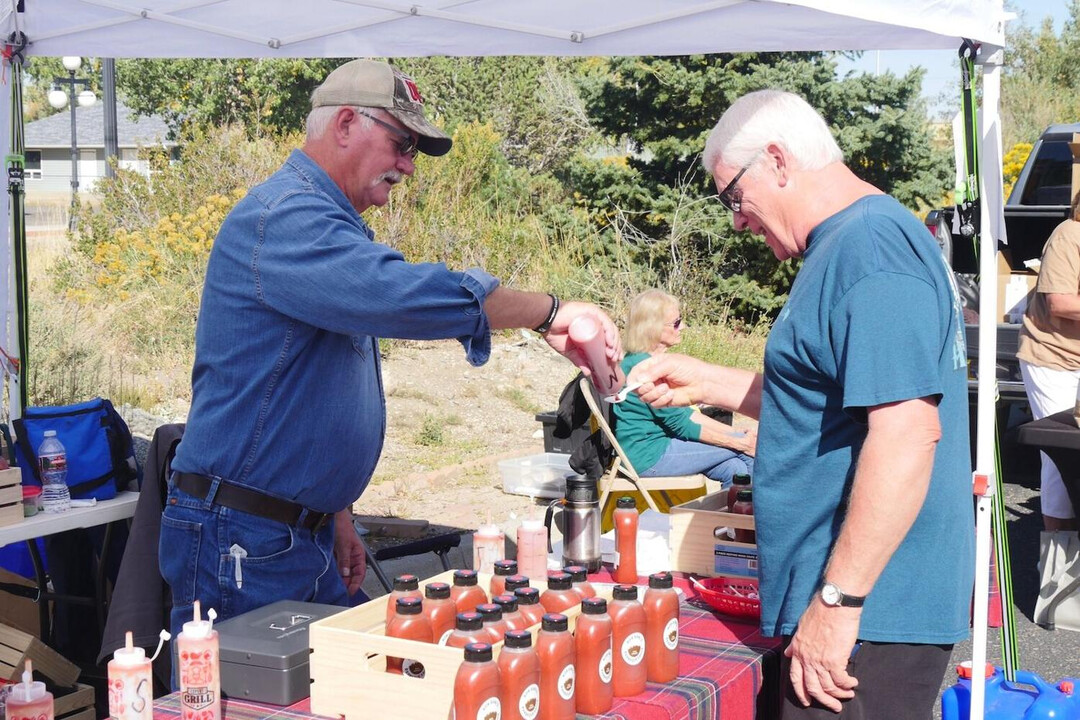
LARAMIE, WY – A new study from the University of Wyoming Extension indicates that if Wyoming residents invested just 5% of their grocery budget in locally sourced food, the state's food production sector could contribute an additional $36.3 million to Wyoming’s Gross Domestic Product (GDP).
Currently, Wyoming’s local food sector contributes $24.4 million to the state’s GDP and generates $44.7 million in annual production, figures that are on a steady upward trend. The UW research highlights this as positive news for both Wyoming producers and consumers.
Anders Van Sandt, assistant professor of regional economics and author of the study, stated, "Local food systems play a crucial role in maintaining reliable and resilient supply chains." In the report, he explained that "as the U.S. food system has become more concentrated around a few large producers, processors, and distributors, it has become more vulnerable and susceptible to supply chain failures." He suggests, "A more resilient food system can be built not by replacing the large global and U.S. food system, but by layering networks of smaller local and regional food systems on top of it."
In Wyoming, the expansion of the local food system is occurring through direct-to-consumer and direct-to-retailer sales. Direct-to-consumer sales include farmers markets, farm stands, or livestock shares, while direct-to-retailer sales encompass school food programs, farm-to-table restaurants, and other platforms bypassing wholesale distributors.
Using data from the USDA’s Agricultural Census, Van Sandt analyzed that direct-to-retailer sales in Wyoming increased by 24% and direct-to-consumer sales by 35% between 2017 and 2022. The average income for direct-to-consumer farms increased by 56% during the same period. Van Sandt added that these estimates are conservative, as some local food manufacturers with no direct farm or ranch affiliation are not included in the Agricultural Census data.
Despite the growing strength of Wyoming's local food system, it faces unique challenges, including high transportation costs, a lack of cold storage facilities, and limited opportunities for private label manufacturing or co-packing. These obstacles can be prohibitively expensive for individual producers, especially given the vast geographical distances between rural communities.
Nevertheless, Van Sandt remains optimistic about the future of local food in Wyoming. He points out that while Wyoming food businesses face distinct difficulties, they also possess unique strengths.
Leveraging these strengths and building public-private partnerships could be key to finding solutions. New partnerships and programs could facilitate the development of a cold storage facility network, devise innovative waste stream solutions for local meat processors, or provide opportunities for small producers to consolidate shipments on the same truck to reduce costs.
Van Sandt noted that several promising grant-supported programs are already underway across the state and regionally. These efforts include expanding Wyoming’s meat processing capacity, improving storage and distribution infrastructure, and developing a statewide "local food brand" to increase awareness of Wyoming-grown products.
"One of the most important things we can do to support our local economies, big or small, is to support our local food producers," said Van Sandt, a community vitality and health specialist with UW Extension. "Purchasing from local producers is like voting with our dollars for greater rural economic development, healthier communities, and more resilient supply chains."
The study highlights that in addition to preventing money from leaving the local economy, local food production tends to be more labor-intensive, leading to the creation of more jobs and a larger economic ripple effect.
"In short," the study concludes, "instead of spending time and money trying to attract new industries to rural areas, significant economic development in Wyoming’s rural communities can be achieved by encouraging and investing in Wyoming’s oldest industry: agriculture."
The full research report is available at: https://bit.ly/wy-local-food-system. Inquiries can be directed to Anders Van Sandt at [email address removed].
Background Information:
US Local Food System: According to USDA data from 2020, U.S. local food sales amounted to approximately $12.8 billion, representing about 3% of total agricultural sales. Local food systems are recognized for their positive impacts on agricultural economies, environmental protection, and community development.
South Korea's Local Food Initiatives: South Korea has implemented various policies to promote local agricultural consumption, such as expanding direct-to-consumer markets (local food stores) and prioritizing the purchase of local agricultural products. These efforts aim to revitalize regional economies and provide consumers with fresh and safe food.
Wyoming's Agricultural Characteristics: Wyoming is characterized by its vast land area and low population density, with livestock farming being a major industry. Developing the local food system can leverage these agricultural characteristics to diversify the regional economy and reduce external dependence.
Importance of Food Security: Recent global instability and climate change have underscored the importance of food security. Strengthening local food systems can enhance the resilience of food supply chains to external shocks and contribute to building sustainable food systems.
[Copyright (c) Global Economic Times. All Rights Reserved.]






























